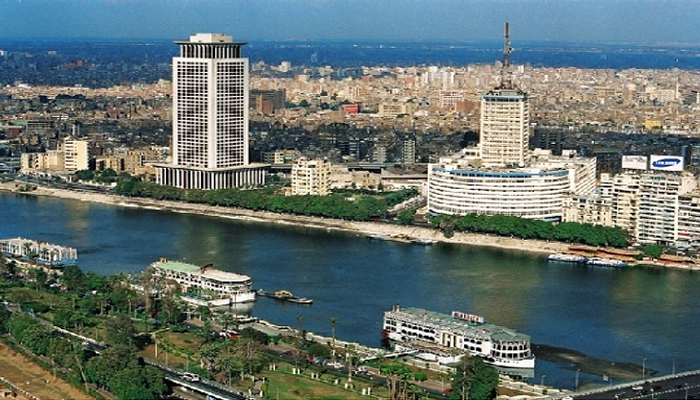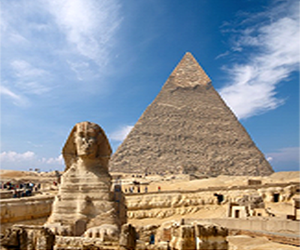
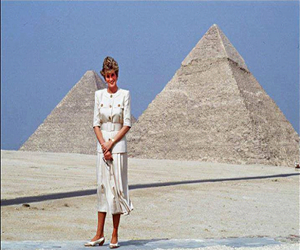
The Great Sphinx has the body of a lion and the face of a man. It is a giant limestone sculpture in the Giza Plateau near modern Cairo, Egypt, measuring 73.5 m. in length by 20 m. in height. The Great Sphinx is the earliest known monumental sculpture.The statue has been missing its nose since at least Napoleonic times.Probably helping to preserve it, the sphinx was nearly buried in sand.The sphinx stands in the Egyptian necropolis at Giza that contains the 3 monumental pyramids: the Great Pyramid of Khufu (Cheops),
who may have ruled from about 2589 to 2566 B.C.,
the Pyramid of Khufu's son Khafra (Chephren),
who may have ruled from about 2558 B.C. to about 2532 B.C., and
the pyramid of Khufu's grandson Menkaure (Mycerinus).There are other smaller pyramids, temples, and a causeway in the Giza necropolis.It is believed the Great Sphinx's head was modeled on Pharaoh Khafra.
Based on the presence of rainwater erosion by the sphinx, it is possible that the sphinx is 2000 years older, according to Archaeology Daily's"The real face of the Great Sphinx of Giza". If so, the face would not have been the pharaoh's. The Archaeology Daily article suggests a lion head to go with the body.
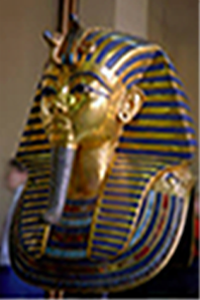
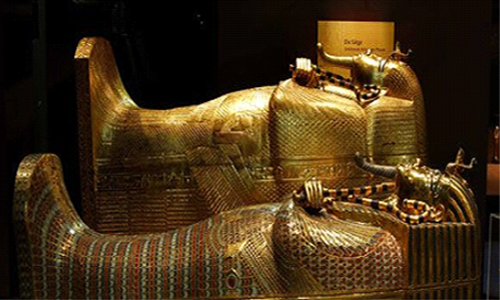
Egyptian Museum, Cairo.
The Egyptian museum was founded in 1857 and right now it contains the world largest collection of Egyptian and Greco-roman articrafts.
The museum is huge and you would need days if you wanted to deeply observe any room.
In my opinion if you intend to stay there a few hours you should make sure to not miss the rooms 22, 27, 32 and 37 with sarcophagies and grave goods of the middle kingdom, room 52 with mummies and the treasure of Tuyankamon which is extremely well preserved.
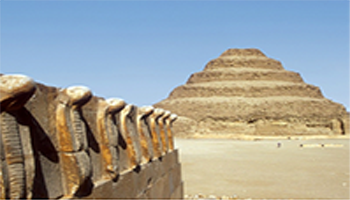
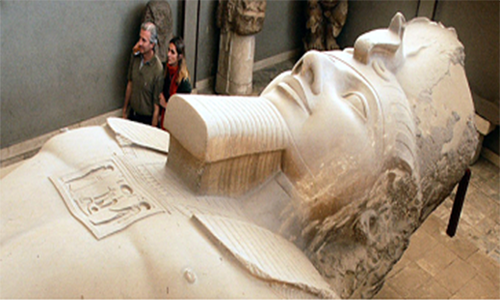
memphis-sakkara Step Pyramid
Memphis was believed to be under the protection of the god Ptah, the patron of craftsmen. Its great temple, Hout-ka-Ptah (meaning "Castle of the ka of Ptah"), was one of the most prominent structures in the city. The name of this temple, rendered in Greek as Aί γυ πτoς (Ai-gy-ptos) by the historian Manetho, is believed to be the etymological origin of the modern English name Egypt.
The history of Memphis is closely linked to that of the country itself. Its eventual downfall is believed to be due to the loss of its economical significance in late antiquity, following the rise of coastal Alexandria. Its religious significance also diminished after the abandonment of the ancient religion following the Edict of Thessalonica.
The ruins of the former capital today offer fragmented evidence of its magnificent past. They have been preserved, along with the pyramid complex at Giza, as a World Heritage Site since 1979. The site is open to the public as an open-air museum.
Sakkara is one section of the great necropolis of Memphis, the Old Kingdom capital and the kings of the 1st Dynasty as well as that of the 2nd Dynasty. are mostly buried in this section of the Memphis necropolis. It has been of constant interest to Egyptologists.
Three major discoveries have recently been made at Sakkara, including a prime ministers tomb, a queens pyramid, and the tomb of the son of a dynasty-founding king. Each discovery has a fascinating story, with many adventures for the archaeologists as they revealed the secrets of the past.
Sakkara is best known for the Step Pyramid, the oldest known of Egypt's 97 pyramids. It was built for King Djoser of the 3rd Dynasty by the architect and genius Imhotep, who designed it and its surrounding complex to be as grand as it was unique and revolutionary. Imhotep was the first to build stone tombs in honor of the king's majesty. His many titles included 'Treasurer of the King of Lower Egypt', 'Administrator of the Great Palace', and 'Imhotep the Builder, the Sculptor, the Maker of Stone Vessels'. Imhotep may have also designed the pyramid of Djoser's successor, Sekhemkhet.
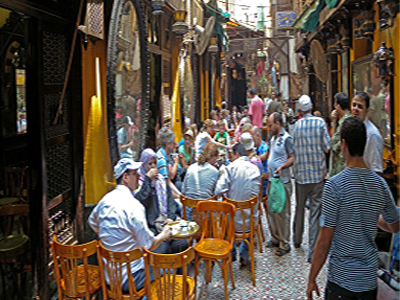
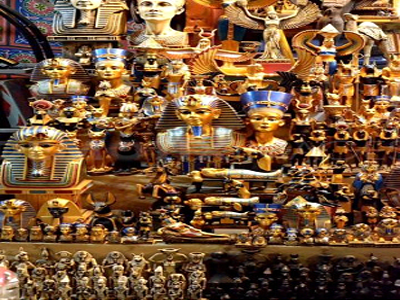
Khan El-Khalili.
So what is a visit to the city of Cairo without walking along the fascinating souk of Khan El-Khalili. This is surely on the top 5 list to see in Cairo
This souq is built in 1382. When the Sultan Barquq started his madrassa in Bayn el-Qasrayn, markets were rebuilt, and Khan el-Khalili was esEither you just walk around the souq or buy stuff like souvenir items, shirts, alabaster statuettes, shisha pipes, spices, papyrus, boofa, lamps, kilims, carpets, jewellries and all sorts of stufftablished. It was also known Turkish bazaar during the Ottoman Empire.
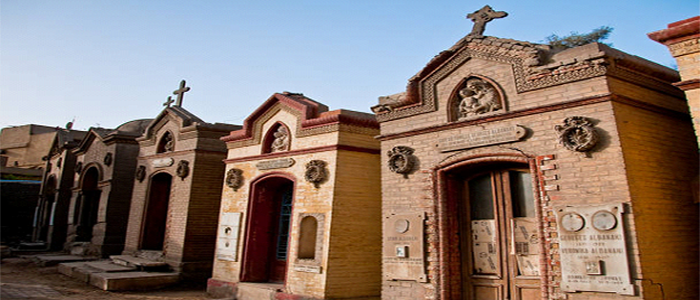
Coptic Cairo.
is a part of Old Cairo which encompasses the Babylon Fortress, the Coptic Museum, the Hanging Church, the Greek Church of St. George and many other Coptic churches and historical sites.
Here's the things you can see during your visit to old Cairo:
The Hanging Church
Church of St Sergius
Church of St George
Convent of St George
Ben Ezra Synagogue
Al Fustat
Mosque of Amr Ibn Al-Aas
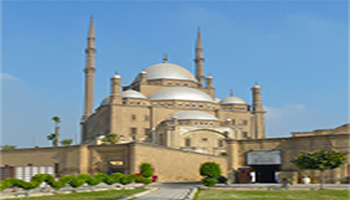
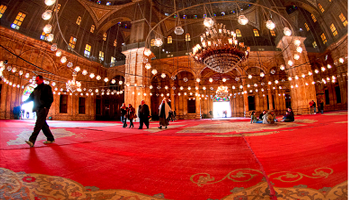
Cairo Citadel or locally known as Qala'at Salah ad-Din is a medieval fortified promontory built by and during the Ayyubids rule under it's famous ruler Saladin, 1176-1183CE. It was built to protect Cairo from Crusaders attack.
For great views of Cairo and the complex holds several mosques and museums.
The Mohammed Ali Mosque is certainly impressive and is included in the entry cost to the Citadel. You can also visit the Mosque of Sultan Al Nasir (not closed on Fridays as not used for prayers). Outside the Bab Al Azab (Al Azab Gate), you can walk to the Sultan Hassan and Rifai mosques (open Sat - Thurs from 8am - 10pm and on Fridays from 8am-1pm and 2.30pm-5pm) The various museums inside the Gate include the Police National Museum, the Military Museum and the Carriage Museum
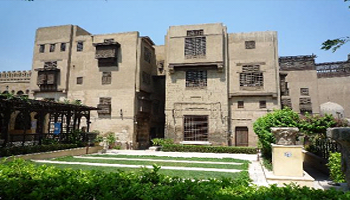
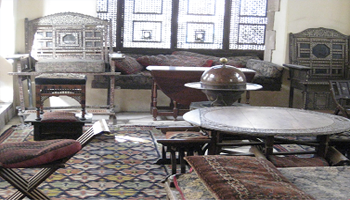
Islamic Cairo, often referred to as Fatimid Cairo, is extremely fascinating, as this part of the city has changed little in perhaps 500 years. It was the centre of Cairo for 8 centuries, from its founding in 969 AD by the Fatimids through the Ayyubid and Mamluke periods, and until the 18th century when Egypt was part of the Ottoman Empire. This area is thus the richest architecturally with about 800 listed historic buildings, including some of the most visited historic sites, such as Khan el-Khalili Bazaar, el-Azhar Mosque, the Citadel and many more. Interesting things and amazing architecture await you around every corne
The new 7 -story opera house at the Gezira Exhibition Grounds was inaugurated on October, 3, 1988. Designed by a team of Japanese and Egyptian architects, it is an architectural masterpiece of Islamic design. It is equipped with the most sophisticated audio-visual system and comprises:
1.The Main Theater, a closed hall comprising 1200 seats, is used for opera, ballet, and classic music performance.
2.The Second Theater is also a closed hall comprising 500 seats and is used for various purposes, including film festivals and conferences.
3.The Third Theater is open and comprises 1000 seats.
There are other halls, some of which are used for training and rehearsals. In addition, the Museum and the Library contain references pertaining to the most significant artistic works.
Gayer-Anderson Museum
Besides the Ibn Tulun Mosque stands two of the city's most interesting houses, the Beit Amna bint Salim (1540) & the "house of the Cretan woman" (Beit al-Kritliyya, 1632). They were originally two separate structures, but a bridge at the third floor level was added at some point, combining them into a single structure. The house, accessible through the outer walls of the mosque, is open to the public as the Gayer-Anderson Museum, named after the British general R.G. 'John' Gayer-Anderson, who restored it in the early 1930's.
The warren of rooms & galleries, the height of luxury in the 17th century, have recently been refurbished and decorated with some exquisite Egyptian, Ottoman and Persian antiques.
Museum of Islamic Art
While the majority of the visitors tend to seek Egyptian antiquities, one must not forget the 1400 years of Islamic heritage in Egypt. Numerous Islamic empires passed through Egypt and left treasures of their civilisations behind. Much of this art and culture is on display at the Museum of Islamic Art. The beautiful neo-Mamluke/Islamic edifice was built in 1904 by the Italian architect, Alfonso Manescalo.
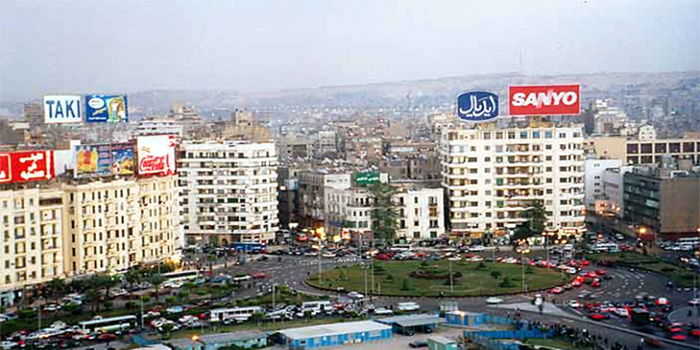
Midan Tahrir
The square is now one of the busiest in Cairo and contains numerous bilboards with various advertisements. The square became world-famous in 2011 as the site of the Egyptian Revolution, which led to the fall of the former president Hosni Mubarak January 2011, and president Morsi 30 June 2013
Select Your Language
Designed & Developed by itQan for Web Design


